Tēnā koutou and nau mai, haere mai to High Country Matters.
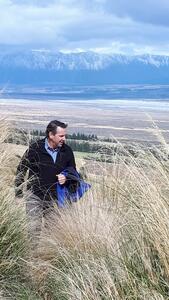
Jerome Sheppard, Head of Crown Property
It’s hard to believe this is our 10th edition. So much has happened since we started this newsletter as a way to keep those with an interest in the South Island high country informed about the changes we’re making to improve the way we manage Crown pastoral leases.
As 2021 draws to a close, we thought we’d take this opportunity to look back on this year. A Māori proverb/whakataukī that recognises the importance of this is ‘Kia whakatōmuri te haere whakamua’, which means ‘I walk backwards into the future with my eyes fixed on my past’.
This really resonates with me not only as the year comes to an end, but also my time here at Toitū Te Whenua. After five years, I decided it was time for a change and look forward to the possibilities that 2022 may bring.
I’ve been fortunate to end on a high having only recently returned from a once-in-a-lifetime trip to Antarctica to support our surveying work. While that’s hard to top, another highlight has been supporting our work in the South Island high country.
It’s been a privilege working with people who are passionate about caring for these iconic landscapes and I’m proud of the improvements the team has made. I look forward to seeing what advances continue to be made over the coming years.
In this edition, we reflect on our pastoral lease visits over the last year and look ahead at what’s coming up in the new year, including an update on the Crown Pastoral Land Reform Bill.
In the spirit of Christmas, we also bring you an update on our efforts to help control wilding pines.
As always, I hope you enjoy our latest issue, and please get in touch if you have any feedback by emailing pastoral@linz.govt.nz
From me and the team here at Toitū Te Whenua, we wish you a hari Kirihimete (merry Christmas) and hari tau hou (happy New Year).
Haere rā,
Jerome Sheppard – Head of Crown Property
Pastoral lease visits
Our pastoral team is lucky to visit some of the most iconic South Island landscapes – the type that many New Zealanders hope to visit during the holidays.
It’s an important part of administering this land and connecting with our leaseholders and their farm managers to understand how their farms are run and provide advice, including about any consents they may require.
Over the last year, the team have visited over 115 pastoral leases, and we’re once again on track to fulfil our commitment to visit each lease at least once every two years. We have also continued to focus on visiting those leases that haven’t been visited in a while.

A view across part of Cecil Peak Station, in Southland
The team will be taking a break over the holiday period. Our offices are closed from 12pm on Friday 24 December and will reopen on 5 January 2022. If you need to carry out any emergency work over this time, take those actions as necessary to keep stock and people safe. As soon as you can, advise your Portfolio Manager, who will be in touch with you upon their return. More information about the process for emergency works is available in our Guide for pastoral leaseholders (on page 14).
We look forward to reconnecting with our leaseholders in the new year.
Crown Pastoral Land Reform Bill
The Government now intends to pass the Crown Pastoral Land Reform Bill early next year.
Due to pressure on Parliament’s time, the Committee of the whole House stage will now take place early next year, followed by the third reading and enactment.
The Minister for Land Information has asked for the public access provision in the Bill to be amended so it better meets the aim of helping ensure that reasonable requests for public access over Crown pastoral leases are not unreasonably refused, while respecting leaseholders’ property rights. A Supplementary Order Paper setting out this amendment will be introduced to Parliament early next year.
We will keep you updated as the Bill progresses.
Submissions open for Lowburn Valley tenure review
The public is invited to have their say on the future of Lowburn Valley pastoral lease.
A tenure review preliminary proposal has been developed for the 5,800 hectare pastoral lease located in Central Otago.
Under the proposal, 1,919 hectares would become conservation land and the remaining 3,896 hectares freeholded, with nearly half protected through conservation covenants restricting activities on the land.
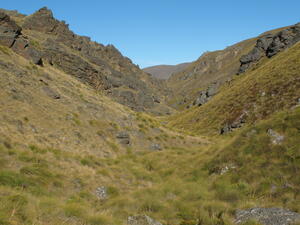
Part of Lowburn Valley proposed to become conservation land. Photo credit: DOC
CCL Craig Harris says the proposal would secure greater protection for these iconic landscapes, expand the adjacent Pisa Conservation Area, and increase public access.
Mr Harris encourages anyone with an interest in the South Island high country and the future of this pastoral lease to share their feedback on the proposal.
For more information about the proposal and how to make a submission please visit our website.
Find out more or make submission
Submissions close Monday 7 March at 5pm.
War on wilding pines
While pine trees are a welcome addition to our homes at this time of year, when it comes to our landscapes, we want to prevent wilding pines from invading native habitat and farmland.
Any species of pine that spreads into an area where they shouldn’t be is known as wilding pines.
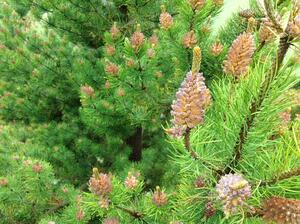
Wilding pine cones. Photo credit: Boffa Miskell
Fortunately, the war on wilding pines is making inroads thanks to collective efforts of individuals and groups across the country.
Over the last year, the National Wilding Conifer Control Programme, led by the Ministry for Primary Industries, has tackled more than half of its four-year target for wilding conifer control work.
National Wilding Conifer Control Programme
Toitū Te Whenua is involved in the programme alongside the Department of Conservation and the New Zealand Defence Force.
The four agencies work closely with regional councils, local community, iwi and hapū groups, researchers, industry, and private landowners to stop the spread of wilding pines.
We developed a Wilding Conifer Information System (WCIS) which holds all infestation and control data to support the programme and inform decision making. We continue the help the programme by managing the system and supporting its users.
Aside from the programme, we are also a representative on Wilding Free Mackenzie, a charitable trust set up to promote awareness about the impact of wilding pines in the Mackenzie.
We would like to acknowledge our leaseholders’ efforts to control wilding pines and other weeds on pastoral leases.
Did you know – Where the wildings are
Did you know that there’s an online app to help stop the spread of wilding pines?
Toitū Te Whenua developed the online app, called Wilding Watch, to enable everybody to play a part in the war on wildings by taking a photo of a tree and logging the location it was sighted.
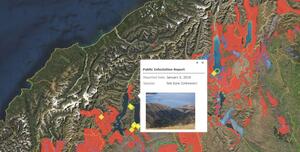
Ngāi Tahu digital atlas, Kā Huru Manu.
An infestation logged on Wilding Watch
The tool provides the multiple agencies fighting the spread of wilding pines with a picture of infestations throughout the country and has supported the National Wilding Conifer Control Programme control efforts.
National Wilding Conifer Control Programme
So, if you’re out and about this summer tramping, climbing, hunting or even just picnicking with the kids and come across wilding pines please log them in the online app.
Meet the team – Peter Va’a
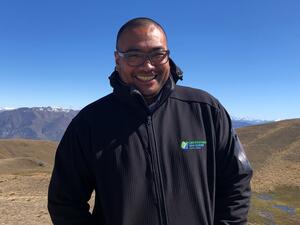
Peter Va’a
When did you join Toitū Te Whenua LINZ?
I’ve been at Toitū Te Whenua nine years. I joined the Property Rights Team in 2012 as a Customer Support Agent and a year later became a Property Rights Analyst. I then made the shift to the Pastoral Team in 2018.
What attracted you to work at Toitū Te Whenua?
I must admit I’d never heard of Toitū Te Whenua until I saw the Customer Support Agent position come up!
While researching the organisation before applying for the role, I was amazed at the wide range of areas Toitū Te Whenua covers, from overseas investment, titles, surveying, and hydrography, right through to managing Crown property. That variety sparked my interest in becoming a part of the team.
What do you enjoy about working at Toitū Te Whenua?
I consider myself fortunate to get the opportunity to experience some of New Zealand’s most iconic landscapes and work with experts and generations of farming families committed to taking the best possible care of this land.
Have you always had an interest in the South Island high country?
Yes, although this interest developed further when I was lucky enough to explore parts of the South Island high country not long after arriving in Christchurch. I became particularly interested in how this challenging terrain could be farmed, so when the role in the Pastoral Team came up, I jumped at the opportunity.
Can you tell us a bit about yourself and your background?
I was born in Samoa and raised in Fiji before moving to New Zealand.
I’ve always had interest in tourism and hold a Diploma of International Tourism.
Prior to joining Toitū Te Whenua, I worked for a non-ferrous metal wholesaler as an Account Manager.
My wife comes from a farming family, so I made the effort early on to learn as much as I could about farming to understand the discussions around the dinner table. That connection has helped me understand some of the challenges leaseholders face.
What interests do you have outside of work?
My favourite thing to do in my spare time is to go for a hike with my wife, two kids and our two dogs around the hills in Christchurch.
I love the outdoors and recently started bow hunting. I’m also a keen surfer and on the odd occasion lace-up my boots for a good old fashioned five-a-side football game.
One fun thing
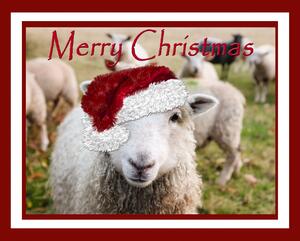
Photo credit: Karen Arnold under the Public Domain license.
Media contact
Email: media@linz.govt.nz